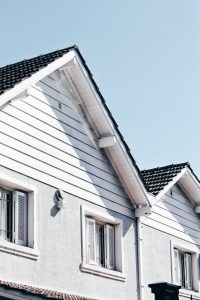There’s something wonderful about coming in out of the cold, walking through the front door so bundled up you can barely move and feeling a welcoming blanket of warm air surround you and defrost your nose. 
In the building trade, R-values are used to measure how well a given material insulates against cold. The R stands for thermal resistance, and the equation used to arrive at it is a brain twister; but the end result is, the higher the number the better. Vinyl siding comes in at a respectable .61. Vinyl siding with an insulated core rates a 1.80. Adding more material bumps up the score, so if you want to really cozy up your home, put a 1-inch layer of foam board insulation underneath the siding and you’ll bump up that score by five.
The goldilock’s temperature zone for installing vinyl siding is around 50-degrees Fahrenheit. Not so warm, the material expands too much; not so cold, it becomes brittle and cracks. That said, experienced contractors know exactly how much play to leave around windows and doors to account for seasonal changes. Some tell cold-weather war stories of how they worked with temperatures hovering around the twenty-degree mark, and the job turned out fine. So if you’ve had it with high heating bills and cold drafts in January, there’s no reason to suffer until Spring comes along. And with contractors typically less busy during the cold months, you just might receive all the attention and get the job done more quickly.
If your old siding is made of vinyl or metal, it must be removed, but new vinyl siding can be installed directly over old wood siding as long as the wood is in good shape. It can even be installed over brick. There’s less preparation and your R-value will skyrocket.
Whatever and whenever your residing project is scheduled, one universal fact endures. Don’t take the cheap route. Cheap vinyl siding is prone to cracking and much harder to handle and install. We work with CertainTeed, one of the premier brands on the market. It’s used when only the best will do.
Contact us for a free in-home estimate.
